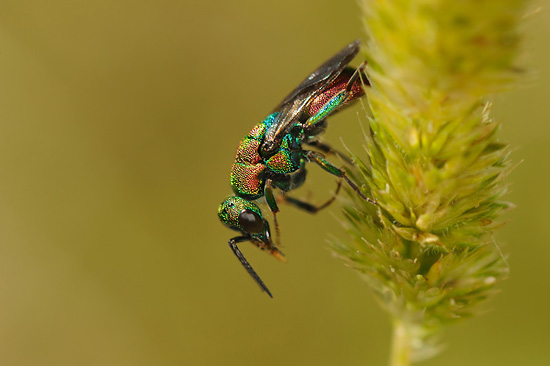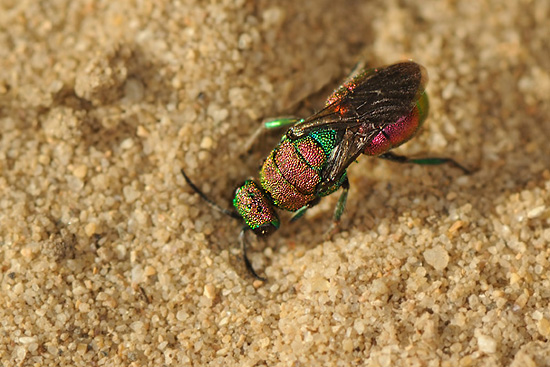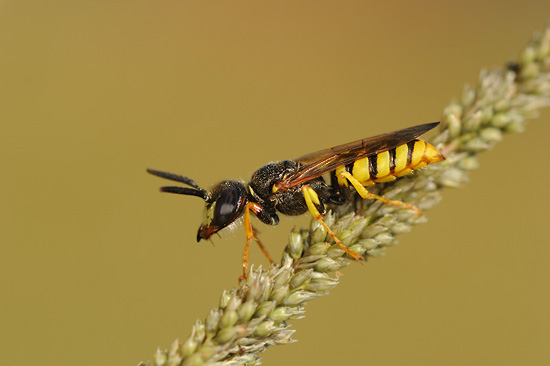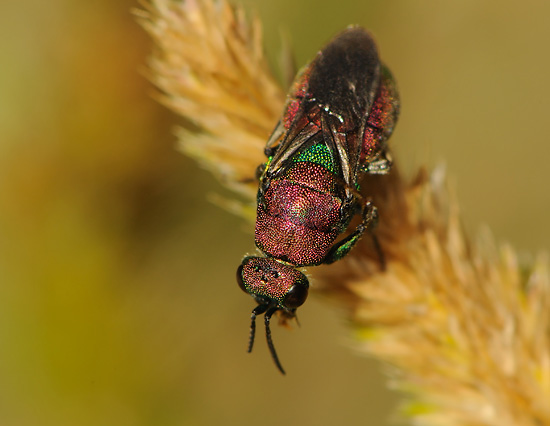This summer I observed at the Basque Coast in Spain, tens of tiny cuckoo wasps along a small sandy path between the grassy dune vegetation.
When having a closer look at these shy shiny jewels I noticed an amazing activity of different bee and wasp species.
I knew the Cuckoo Wasps are parasites on other solitary bee and wasp species. But as I am not familiar with this particular group, I didn't knew which were the species I saw. I enjoyed their busy activities anyway and took some pictures. At home, with the help of a friend, I found out I had photographed a Cuckoo Wasp species and its host. And what's more, the species even seems to parasitize on another parasite!
Under here an image of Hedychrum rutilans.

Members of the Cuckoo Wasp family - Chrysidinae, are generally parasites or cleptoparasites, laying their eggs in host nests, where their larvae consume the host egg or larva while it is still young, then consuming the provisions. They have generally brilliantly colored metallic-like and highly sculptured bodies. They are most diverse in desert regions of the world, as they are typically associated with solitary bee and wasp species, which are also most diverse in such areas.
Under here another image of Hedychrum rutilans, who was digging in the sand.

The species on the image, Hedychrum rutilans, is known to parasite on European Beewolves.
Under here, an image of the European Beewolf, which is a quite large solitary wasp species.

Beewolves are solitary, predatory wasps most of which prey on bees, hence their common name. The adult females dig tunnels in the ground for nesting. As with all other sphecoid wasps the larvae are carnivorous, forcing the inseminated females to hunt for other invertebrates (in this case bees), on which she lays her eggs, supplying the larvae with prey when they emerge. The adults collect nectar from flowers or from squeezing the bees they capture for prey. The nectar is their energy source for flight.
This species Philanthus triangulum, mainly hunts on Honey Bees. They sting their prey in a membranous location on the ventral surface where the venom quickly paralyzes major voluntary muscles, yet does not kill the prey.
Under here, another species of Cuckoo Wasp, which was also active at the same site. It is another Hedychrum or Hedychridium species.

